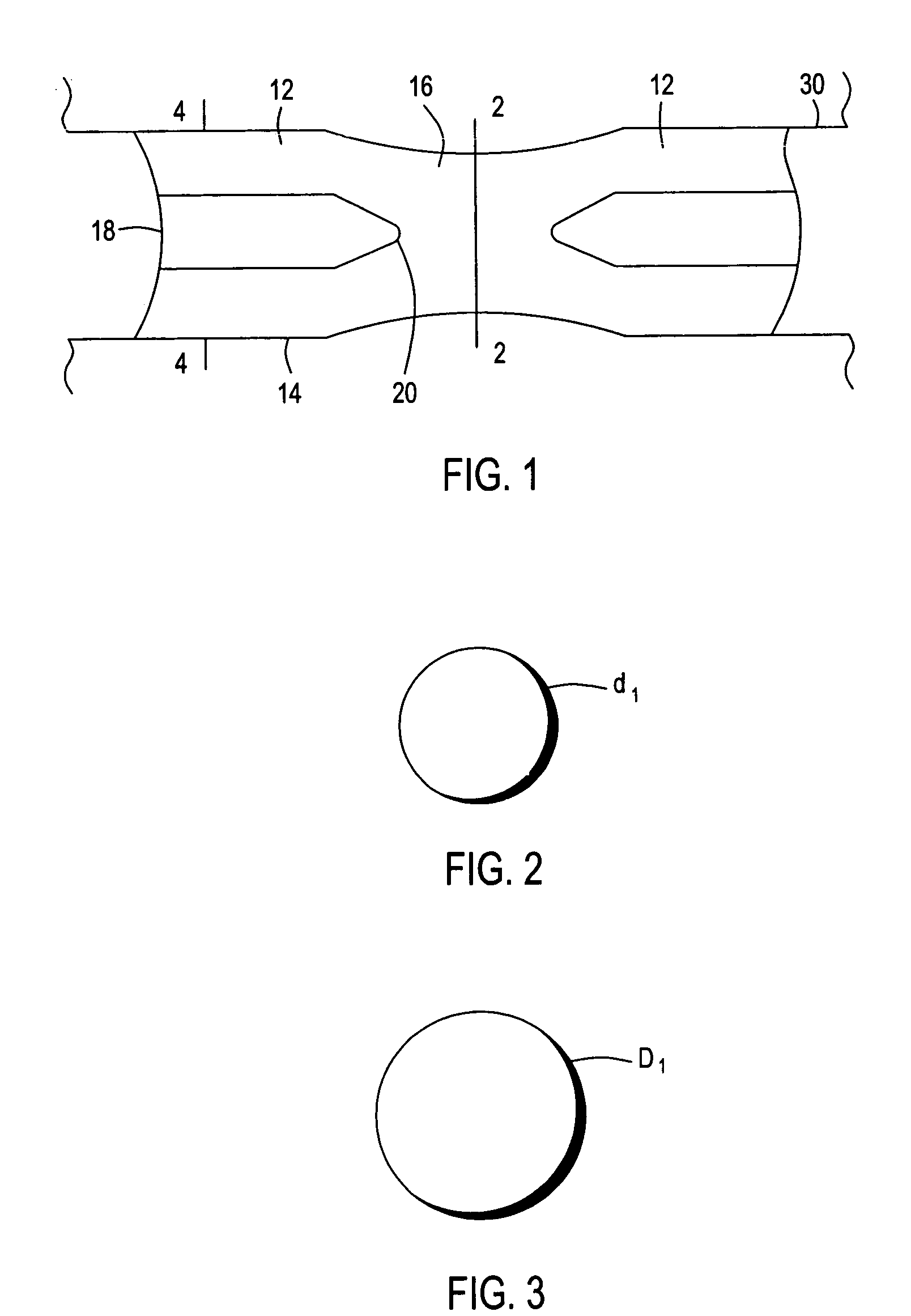Methods and apparatus for reforming and expanding tubulars in a wellbore
a wellbore and tubular body technology, applied in the direction of drilling casings, wellbore/well accessories, pipes, etc., can solve the problems of limited expansion of casing strings, limiting the volume of hydrocarbon production of casing strings, and reducing the diameter of wellbores, etc., to achieve the effect of expanding the inner diameter of casing strings
- Summary
- Abstract
- Description
- Claims
- Application Information
AI Technical Summary
Benefits of technology
Problems solved by technology
Method used
Image
Examples
Embodiment Construction
[0044]It is among the objectives of embodiments of the present invention to facilitate use of folded tubing in downhole applications, and in particular to permit use of tubing made up from a plurality of folded pipe sections which may be coupled to one another at surface before being run into the bore.
[0045]According to a first aspect of the present invention there is provided downhole apparatus comprising a plurality of tubing sections, each tubing section having substantially cylindrical end portions initially of a first diameter for coupling to end portions of adjacent tubing sections and being expandable at least to a larger second diameter, and intermediate folded wall portions initially in a folded configuration and being unfoldable to define a substantially cylindrical form at least of a larger third diameter.
[0046]The invention also relates to a method of lining a bore using such apparatus. Thus, the individual tubing sections may be coupled together via the end portions to ...
PUM
 Login to View More
Login to View More Abstract
Description
Claims
Application Information
 Login to View More
Login to View More - R&D
- Intellectual Property
- Life Sciences
- Materials
- Tech Scout
- Unparalleled Data Quality
- Higher Quality Content
- 60% Fewer Hallucinations
Browse by: Latest US Patents, China's latest patents, Technical Efficacy Thesaurus, Application Domain, Technology Topic, Popular Technical Reports.
© 2025 PatSnap. All rights reserved.Legal|Privacy policy|Modern Slavery Act Transparency Statement|Sitemap|About US| Contact US: help@patsnap.com



